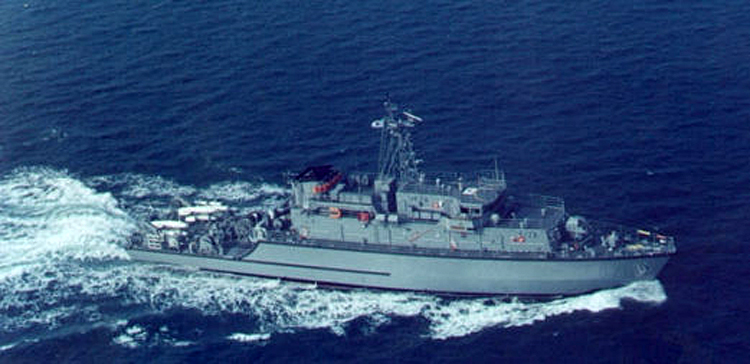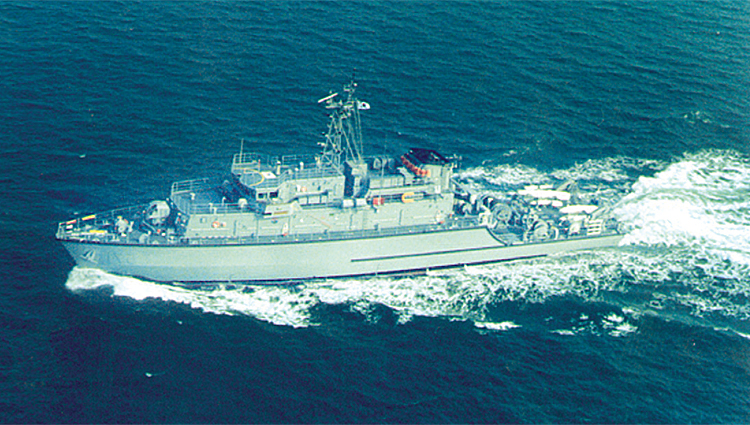INDIAN ARMED FORCES CHIEFS ON OUR RELENTLESS AND FOCUSED PUBLISHING EFFORTS

The insightful articles, inspiring narrations and analytical perspectives presented by the Editorial Team, establish an alluring connect with the reader. My compliments and best wishes to SP Guide Publications.

"Over the past 60 years, the growth of SP Guide Publications has mirrored the rising stature of Indian Navy. Its well-researched and informative magazines on Defence and Aerospace sector have served to shape an educated opinion of our military personnel, policy makers and the public alike. I wish SP's Publication team continued success, fair winds and following seas in all future endeavour!"

Since, its inception in 1964, SP Guide Publications has consistently demonstrated commitment to high-quality journalism in the aerospace and defence sectors, earning a well-deserved reputation as Asia's largest media house in this domain. I wish SP Guide Publications continued success in its pursuit of excellence.
- MoD initiates comprehensive review of Defence Acquisition Procedure 2020, pushes for defence reforms
- G7: The Swansong
- Kalinga Connect: South Asia to Polynesia
- Advanced MRSAM for India for a greater firepower
- Must Credit DRDO for Operation Sindoor, now what is next for defence R&D?
- Operation Sindoor | Day 2 DGMOs Briefing
- Operation Sindoor: Resolute yet Restrained
Minesweeping Criticality
Though the deal was supposed to be closed in 2016 but discussions on technology transfer (ToT) reportedly caused delays
 |
The Author is Former Director General of Information Systems and A Special Forces Veteran, Indian Army |

In 2017, the Parliamentary Committee for Defence had noted, “The six MCMVs (mine countermeasure vessels) are slated for de-induction by 2016-2018. 2016 has already passed and moreover, building the MCMVs will also take considerable time. The Committee feels that the entire process of procurement of MCMVs will be delayed inordinately.”
The Parliamentary Committee for Defence asked the government to make “sincere and concerted efforts” to equip the Navy with the critical capability. The worrying part ‘then’ was that Navy was likely to be without minesweeping capability till year 2021. Media had then reported that India “could” sign a 32,640-crore deal with a South Korean shipyard for building 12 x mine countermeasure vessels (MCMVs) in the country by March 31 though the first of those were likely to be delivered only in 2021.
As per media reports in 2017, the new MCMVs were to be built at Goa Shipyard Limited (GSL) in collaboration with Busan-based Kangnam Corporation under the government’s ‘Make in India’ initiative. Though the deal was supposed to be closed in 2016 but discussions on technology transfer (ToT) reportedly caused delays. All 12 x MCMVs were to be constructed in India, and were expected to have 60 per cent indigenous content. The construction of the first vessel was expected to begin in April 2018, and deliveries were likely to be completed between 2021 and 2026.
Media also reported that the GSL had already spent 800 crore on scaling up infrastructure to kick off construction of the MCMVs that were to have a displacement of 800 to 1,000 tonne, creating facilities for building glass-reinforced plastic hulls, a design that reduces the ship’s magnetic signature and allows safer navigation through waters that could be mined.
GSL had already spent 800 crore on scaling up infrastructure to kick off construction of the MCMVs
However, recent media reports have brought out that the above attempt to obtain foreign technology to build the MCMVs in the state-run GSL in collaboration with South Korea’s Busan-based Kangnam Corporation were abandoned in 2018 due to the huge costs of procurement and failed talks.
Latest is that the Ministry of Defence (MoD) has issued a Request for Information (RFI) on August 13, 2021, to procure three or four MCMVs from a foreign government or a shipyard backed and/or funded by a foreign government, which would offer sovereign guarantee through government-to-government (G2G) agreement.

According to the RFI document:
- Mine Counter Measure Vessel (MCMV) should be capable of locating, classifying and neutralising all types of ground and moored mines, mine laying, channel conditioning, route survey, sanitisation, local naval defence.
- Capable of Search and Rescue (SAR) operations, Maritime Interdiction Operations (MIO) and Visit Board Search and Seize (VBSS) operations.
- Three to four MCMVs are proposed to be procured/leased.
- The anticipated delivery timelines for the first vessel is maximum of 10 months, followed by delivery of subsequent vessels every four months.
The procurement options that the MoD plans to exercise with foreign sovereign guarantees under the G2G agreement are as follows: Option I - procurement of in service/decommissioned MCMVs which can be retrofitted to Indian Navy’s requirements, and; Option II - lease of in service/decommissioned MCMVs, which can be retrofitted to Indian Navy requirements for 10 years extendable to 15 years with an option of acquiring the asset at the end of lease period at a price agreed at the beginning of the lease.
The construction of the first vessel was expected to begin in April 2018, and deliveries were likely to be completed between 2021 and 2026
According to the RFI, the bidders are required to respond by October 7, 2021.
Hopefully, MoD will be able to plug this operational criticality of the Indian Navy in an early timeframe. The ironic part is that it didn’t require the Parliamentary Committee for Defence in 2017 that the six MCMVs of the Navy were slated for de-induction by 2016-2018. Planning to address the voids should have commenced minimum eight years prior to 2016.
The Maritime Strategy released by the Indian Navy in 2015 titled ‘Ensuring Secure Seas: Indian Maritime Strategy’ provides a renewed focus on India’s Maritime Security needs in the Indian Ocean Region (IORA). Prime Minister Narendra Modi starting from his first premiership commencing May 2014 indicted his focus on the India Ocean by visiting multiple nations in the IOR. India has focused on the Bay of Bengal Initiative for Multi-Sectoral Technical and Economic Cooperation (BIMSTEC) by prioritising relations with Bangladesh, Bhutan, Myanmar, Nepal, Sri Lanka, and Thailand. India has signed bilateral agreements with multiple countries for use of ports and logistics support. In addition, India has invoked the right spirit of Security and Growth for All in the Region (SAGAR).
The ‘Sagarmala’ project was initiated to emphasize port-led development aimed at building a robust port infrastructure and modernise them given their importance in trade and economic development. India along with many members of the Indian Ocean Rim Association (IORA) strives to achieve sustainable use of the Indian Ocean resources.
According to the RFI, the bidders are required to respond by October 7, 2021
On the security front, the Maritime Capability Perspective Plan (MCPP) is the grand regional plan to bolster India’s operational capabilities by inducting new warships, submarines, and aircraft besides enhancing New Delhi’s influence in the strategic maritime zones. But how earnest are we in implementing the MCPP – will the same laid back implementation and red tape continue? Are we destined to wake up after criticalities surface in hindsight or can we expect some foresight in the execution of the grandiose plans as well?
It would be naïve to think that the increasing terror threat will not encompass the sea bringing sea mines into play. The Arabian Sea is already witnessing drone attacks against shipping, so why not sea mines.





